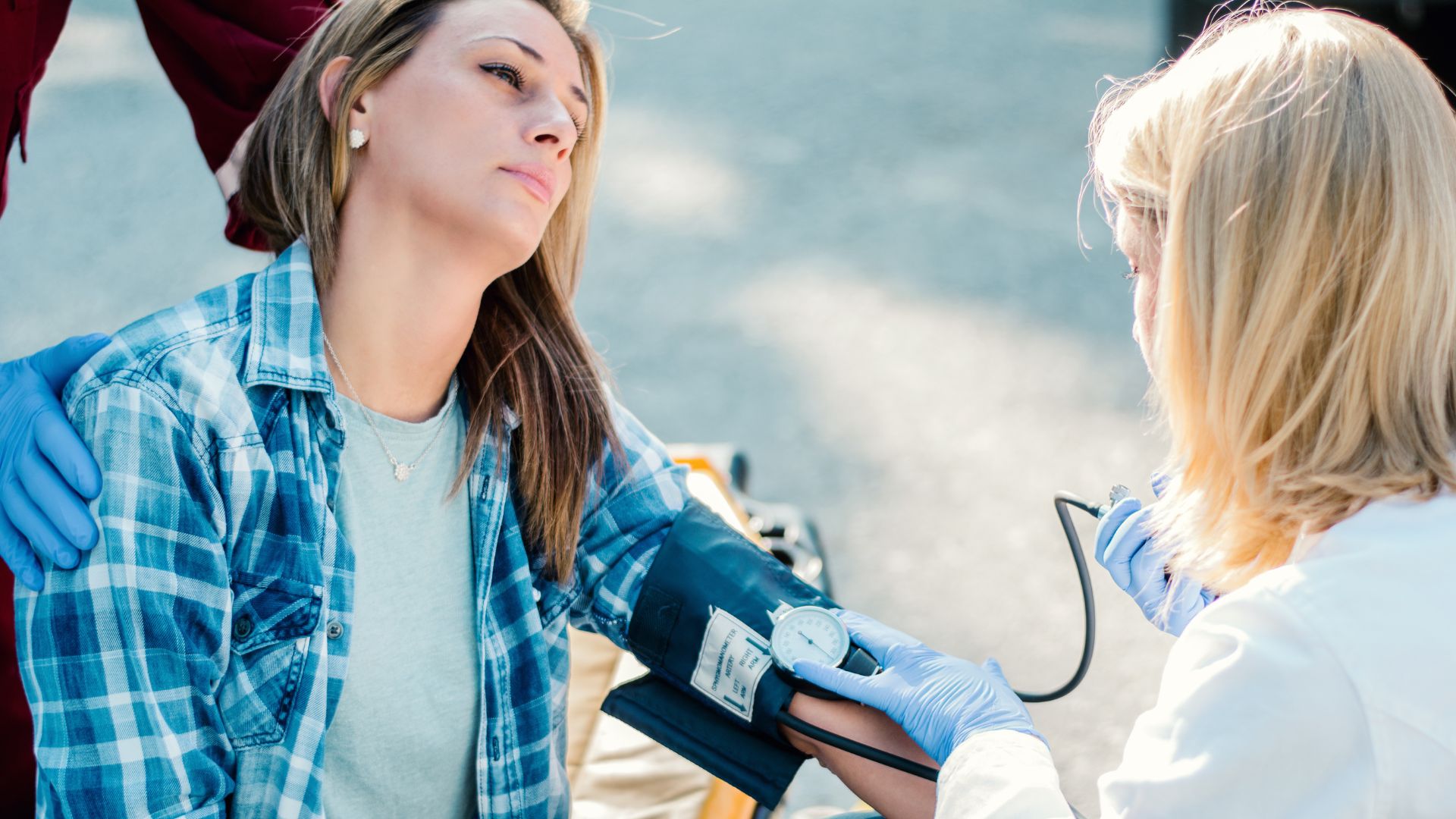
Medical emergencies can be terrifying, especially if you’re not prepared. Knowing when emergency medical care is needed and having a protocol for medical emergencies is key to mitigating a health crisis. Therefore, it is essential to anticipate medical emergencies and know what to do when they happen.
Identifying Medical Emergencies at Home
Again, knowing what constitutes a medical emergency gives caregivers options. These are some of the most common medical emergencies requiring emergency care:
- Uncontrolled bleeding
- Breathing difficulties
- Chest pain
- Choking
- Bloody coughing or vomiting
- Symptoms of fainting or loss of consciousness
- A desire to commit suicide or murder
- Head or back injuries
- Severe or persistent vomiting
- Sudden injury resulting from an accident
- Sudden, severe pain anywhere in the body
- Sudden dizziness, weakness, or change in vision
- Sudden nausea, vomiting, or diarrhea
- Ingestion of a poisonous substance
- Extreme abdominal discomfort or pressure
(MedlinePlus)
Dealing With Medical Emergencies
Emergencies at home need to be dealt with carefully. It can be overwhelming, the first step is to calm down and take a deep breath. You can also prepare for medical emergencies that happen at home by doing the following:
Prepare Paperwork and Records
Keep personal and financial documents in watertight, portable containers. Identification documents, insurance cards, the MOLST (Medical Orders for Life-Sustaining Treatment) form, the DNR form, and advance directives should be included.
Medication List
Keep a current list of the medications your family takes, as well as pharmacy and doctor contact information.
Emergency Contacts
Make and keep a list of family members, physicians, and other personnel involved with family medical care. Know your local emergency medical services and what emergency medical services they offer.
CPR and First Aid
Take classes in first aid and CPR. Assemble and maintain first aid kits at home and for traveling, such as in an automobile. Discuss with your loved one’s healthcare provider and proper use of blood sugar monitor, blood pressure monitor, automated external defibrillator, etc.
(Medstarhealth)
Dealing with Medical Emergencies at Work
According to NIAID and the National Institute of Health,, we can create medical emergency procedures to save time and avoid serious injuries in the workplace. Here are some things to remember when there is a medical emergency at work:
- Dial 911 from any landline or mobile phone
- Stay calm and with the victim/patient until assistance arrives
- Provide first aid if you are trained to do so
Before taking action, you should consider if the area you and the victim are in is safe. Move the victim only if their safety is at risk. Nearby individuals can assist with first aid or call for help. It’s also important to know if bystanders require direction so that they do not become injured or ill.
Getting Help at Work
- Contact building safety or 911 (if off-campus)
- Request assistance to prevent crowds from congregating around the victim
- Inform your supervisor of the incident
Work-Related Incident Reports
Work accidents and injuries requires proper incident documentation. Reporting requires provide the following information to supervisors:
- Time of occurrence
- Location of the incident
- Description of the injury or ailment
- Measures taken
- List of witness names
When to Call for an Ambulance
An ambulance transports patients to a hospital and allows emergency medical technicians (EMTs) to begin medical treatment immediately upon arrival, extending care during the transportation. Having a “when to call” protocol in place is critical to insuring an expedited response.
Examples of When to Call an Ambulance
Call an ambulance when the individual’s condition has the potential to be life-threatening or fatal.
CPR is Performed
CPR is required if a person stops breathing or their heart stops. Call 911 before starting CPR so an ambulance can be dispatched; the dispatcher can also assist you with life-saving procedures. (National Institute of Allergy and Infectious Diseases)
Moving the Patient
If moving the patient aggravates their injuries. This is visible in car accidents, falls, and other types of trauma. EMS personnel are trained to extract people from potentially dangerous situations safely.
Patient is Immobile
Due to a fall, injury, or weakness, you or the patient cannot reach the Emergency Department. If the patient is you, operating a motor vehicle is dangerous if you cannot stand alone or are unsteady on your feet. Don’t drive; call for help.
(National Institute of Allergy and Infectious Diseases)
Medical Emergencies and the ER
It’s also important to know that federal law mandates that anyone who visits an emergency department receives treatment and stabilization and that their insurance coverage is based on their symptoms, not their final diagnosis. Don’t let insurance concerns stop you from seeking help with a medical emergency.
Medical crises can occur at any time. Preparing to care for yourself and your loved ones during these unexpected times is essential. Proper planning assures better outcomes when dealing with medical emergencies. Anyone who suspects they are experiencing a medical emergency should seek emergency medical care immediately.
Works Cited
MedlinePlus. “Recognizing Medical Emergencies: Medlineplus Medical Encyclopedia.” MedlinePlus, U.S. National Library of Medicine, medlineplus.gov/ency/article/001927.htm.
National Institute of Allergy and Infectious Diseases. “Medical Emergency Procedure.” National Institute of Allergy and Infectious Diseases, U.S. Department of Health and Human Services, www.niaid.nih.gov/global/emergency-medical-emergencies.
Medstarhealth. “Preparing-for-Medical-Emergencies-at-Home.” Preparing for Medical Emergencies at Home, www.medstarhealth.org/blog/preparing-for-medical-emergencies-at-home.
Emergency physicians. When-and When Not-to Call an Ambulance, www.emergencyphysicians.org/article/er101/when—and-when-not—to-call-an-ambulance.
